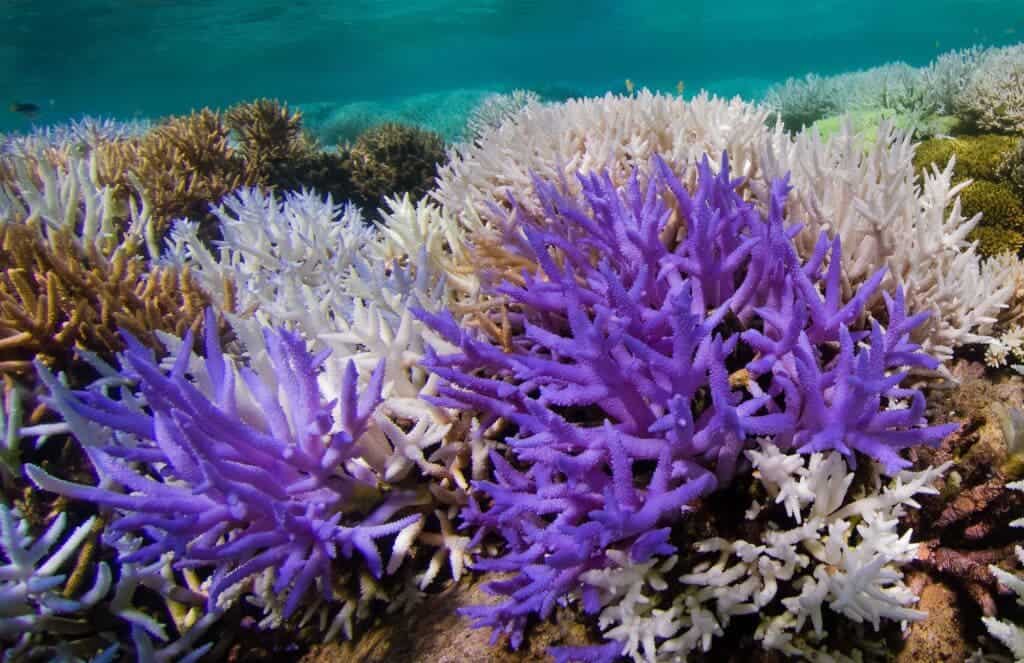Among the victims of climate change, coral reefs are clearly some of the most visible. The rise in seawater temperatures in the world’s oceans has caused the death of many corals in recent years in diverse places from Panama to Seychelles.

Warmer waters can cause bleaching in corals, turning the coral’s tissue in a ghostly white color and eventually killing it. But, in some cases, something different can happen, with corals turning a bright array of colors as part of their last effort to survive.
That phenomenon is called colorful bleaching and has been observed since 2010 but without much knowledge about it. Researchers have now taken a closer look, discovering that glowing corals are telling us they are trying to survive.
When healthy, corals rely on a mutually beneficial coexistence with tiny algae. Corals get energy from photosynthesis provided by the algae, while the algae take shelter and nutrients from the corals. The pigments from the photosynthesis given by the algae are the reason why many corals appear to be brown.
But this deal can be easily altered by rising ocean temperatures. The algae disappear and the white skeletons of the corals get exposed, looking like they were bleached. The corals usually starve without the algae and finally die. This leads to the collapse of the reefs and their decline, affecting ocean biodiversity.
A colorful last stand
A group of researchers decided to investigate the occurrence and reasons behind the colorful bleaching phenomenon registered in recent years. To do so, they did experiments at the University of Southampton’s Coral Reef Laboratory, exposing common corals to different types of light and conditions.
The experiments showed that the bright colors act as a protective layer, similar to sunscreen, when the algae are no longer attached to the corals, encouraging their return. For Jörg Wiedenmann, lead study author, the colorful bleaching is a way for corals to self-regulate, entering into a feedback loop with the algae.
The algae absorb the sunlight that the corals receive, creating the already mentioned pigments. But when the algae are gone the coral has to deal with that excess sunlight and their white skeletons can reflect it. This causes more stress, preventing the reunion between the coral and algae.
“However, if the coral cells can still carry out at least some of their normal functions, despite the environmental stress that caused bleaching, the increased internal light levels will boost the production of colorful, photoprotective pigments,” Wiedenmann said in a statement.
Wiedenmann and his team recreated in their experiments the ocean temperatures in which the colorful bleaching events happen. They discovered that the phenomenon might surface in less extreme ocean-warning events that are shorter and milder or linked to a reaction to changes in nutrients of the corals.
While this gives hope that the corals can actually recover, the researchers emphasized that improving the quality of the water in the different regions of the world and reducing greenhouse gas emissions represent the best ways to guarantee the survival and continued presence of coral reefs.
“Bleaching is not always a death sentence for corals, the coral animal can still be alive,” said Cecilia D’Angelo, study coauthor. “If the stress event is mild enough, corals can re-establish the symbiosis with their algal partner.”
The study was published in the journal Current Biology.


